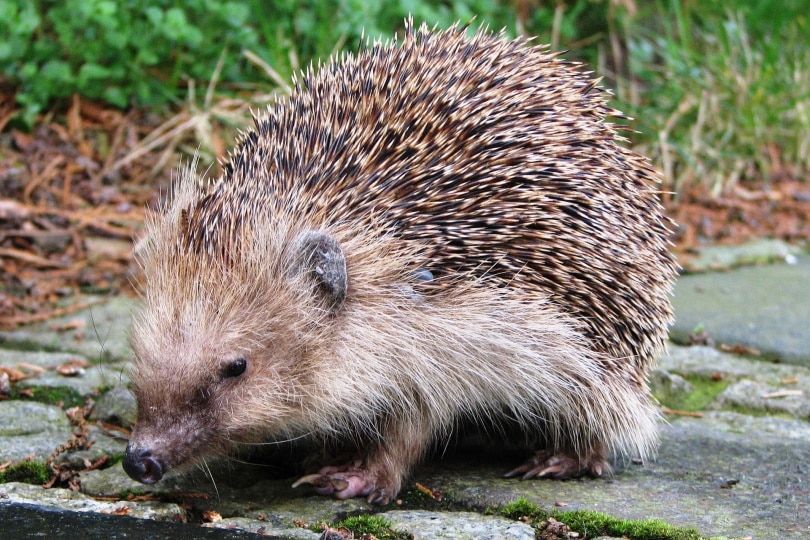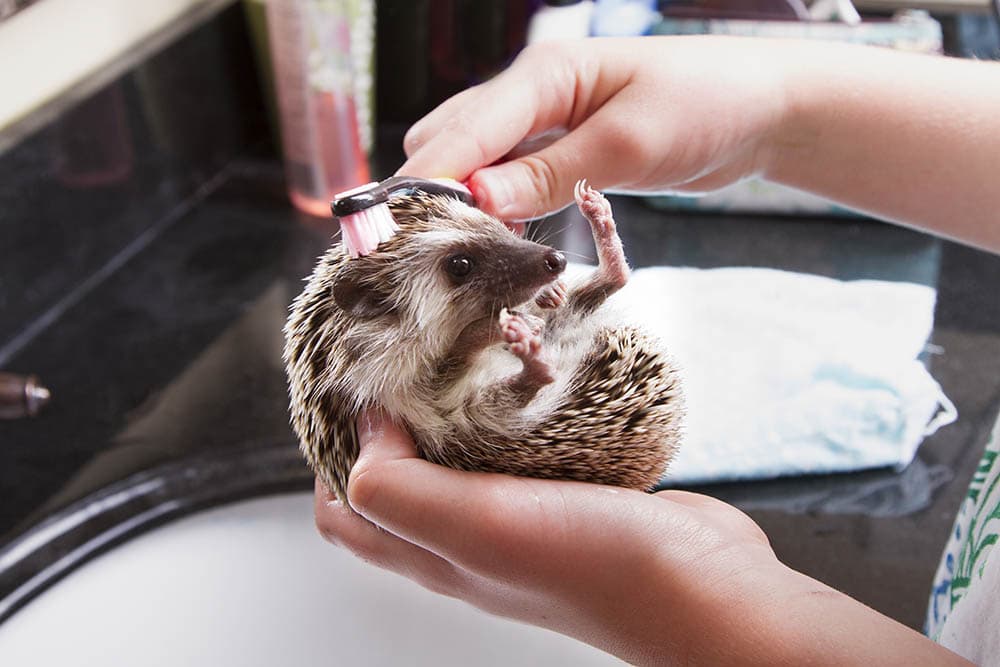
It’s easy to get distracted by a hedgehog’s spiky appearance and their cute little faces and completely miss the fact that they have whiskers. That’s right, hedgehogs do have whiskers, and it’s a good thing they do, too! A hedgehog’s whiskers play a vital role in all aspects of their survival, let’s find out how.
What Are Whiskers, Exactly?
Whiskers may not seem like anything other than just longer, thicker hairs but for animals that have them, they are quite useful. Whiskers are modified hairs, also known as vibrissae or “tactile hairs” and most mammals have them at some point in their lives except for humans, the duck-billed platypus, and echidnas.
Whiskers do grow right out of the hair follicle, just like other hairs but they are much deeper, and the follicles are full of nerve cells and blood vessels. Whiskers work through the vibration that stimulates the nerves within the follicles.

What do Hedgehogs Use Their Whiskers for?
Whiskers serve many useful purposes and work well in addition to a hedgehog’s other senses that are vital for survival. Let’s take a look at what kind of uses a hedgehog’s whiskers serve:

A Hedgehog’s Senses
We’ve touched on how a hedgehog’s whiskers work and also how their eyesight is less than superior. But where the eyes fall short, their other senses make up for it.
Hearing
Hedgehogs don’t have very large ears, but they are very sensitive and perfectly positioned to pick up high-frequency sounds. Hedgehogs can hear in a frequency range of 250 to 45,000 Hz, according to the Louisiana State University. Humans can hear low-range frequencies down to 64 Hz, showing you how limited a hedgehog’s low-frequency hearing abilities are, but they far exceed our maximum range of 23,000 Hz. This high-frequency hearing ability allows hedgehogs to pick up on potential predators and pretty items. Those who own pet hedgehogs may notice how sensitive these little guys are to unusual sounds. This level of hearing is also helpful in navigating their environments.

Smell
Hedgehogs may have whiskers and a great sense of hearing to use in their favor, but nothing beats their cute little noses. A hedgehog’s sense of smell is their sharpest sense. Keepers will notice that when their hedgehogs wander about, those noses are hard at work sniffing all around. This is completely normal behavior, as these foragers use their sense of smell to let them know what’s going on all around them.
Summary
A hedgehog’s whiskers are sensory receptors that help them find food, detect potential threats, and navigate throughout their environment as they forage. In addition to whiskers, hedgehogs also use their keen sense of smell and high-frequency hearing abilities to help them make their way through life.
Featured Image Credit: Pixabay








